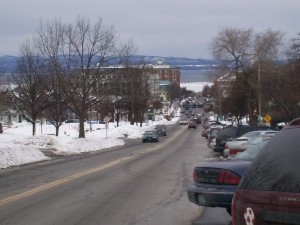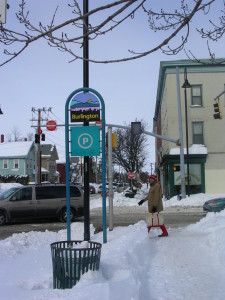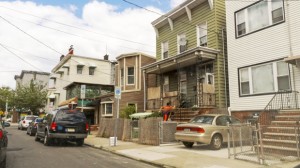A willingness to consider home-sharing is among the key findings of a new AARP survey of 500 Burlington residents age 45 and older.
 When asked if they would be open to a home-sharing arrangement with a person who could provide services in order for them to continue living in the home, 56 percent of the respondents said yes. That was up from 36 percent in an AARP survey nine years ago.
When asked if they would be open to a home-sharing arrangement with a person who could provide services in order for them to continue living in the home, 56 percent of the respondents said yes. That was up from 36 percent in an AARP survey nine years ago.
The new response suggests a pent-up demand for more accessory dwelling units on properties where older Burlingtonians want to age in place — which most respondents clearly wish to do. Seventy-nine percent “strongly agreed” when asked about their desire to remain in their current home, and 80 percent rated Burlington as a good or excellent place for older people to live.
The home-sharing finding suggests that current services, mentioned in a previous post, are undersubscribed. It also points to a need for a supportive regulatory climate for accessory dwelling units, which are, after all, an important piece in the chronic puzzle of how to come up with more affordable housing.
Another housing finding of note: Asked their opinion about building moderate- to low-income housing units in vacant lots in Burlington, 67 percent responded favorably, with 32 percent opposed. These numbers might have been slightly higher/lower is the question had used the contemporary term of choice, “affordable housing,” which has a nicer ring but which is, we have to admit, something of a euphemism.
Asked for their concerns about what might make it difficult to age in place, “high cost of living” topped the list, but it remains unclear which kinds of costs, specifically, are at issue.
Besides housing, transportation and “community engagement” were spheres covered by the telephone survey, which comprised 20-minute telephone interviews of randomly selected people. The margin of error was 4 percent. To see the full survey, “The Path to Livability: A Citizen Survey of Burlington, Vermont,” click here.
A presentation of the survey results by researcher Joanne Binette was made in AARP’s Burlington office to an audience of about two dozen people, among them housing and transportation specialists.
Older people in Burlington get around in multiple ways. Driving is still the main way (83 percent), but these people also walk (68 percent) and bike (41 percent) or take the bus (27 percent) at least some of the time.
Generally, they find it easy to get around even if they couldn’t drive (66 percent). The main drawback to bus service, they said, was the lack of weekend or evening service. (One set of bus concerns relates to schedules and routes, another to bus stops and access to them.)
Fifty-fi ve percent said they would bicycle if conditions for cyclists were better.
ve percent said they would bicycle if conditions for cyclists were better.
But are the streets safe? Apparently they’re more so for bicyclists (51 percent said streets are safe for cyclists) than for people with disabilities (41 percent), older people (36 percent) or children (33 percent) or pedestrians (27 percent).
Respondents had opinions on improving sidewalks and bus service, but appeared to be relatively satisfied with educational and social activities available to them in Burlington.





